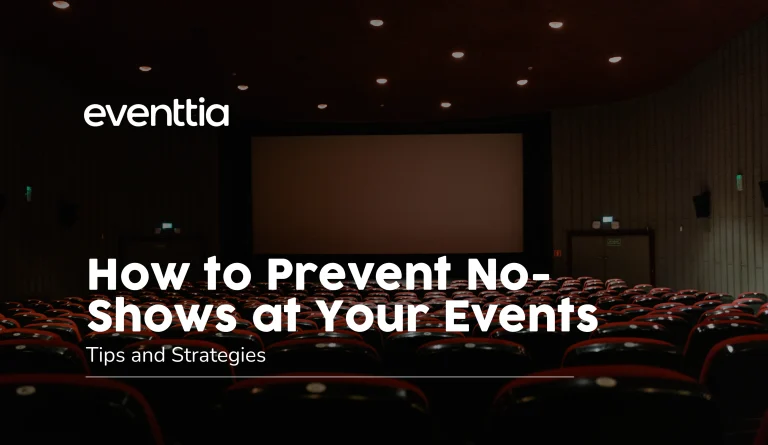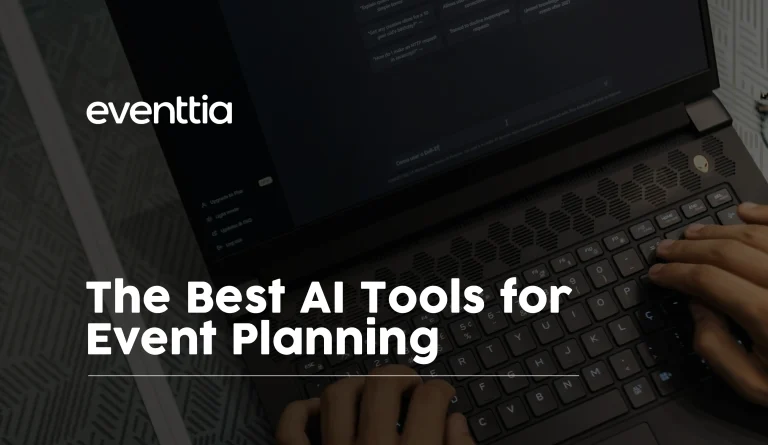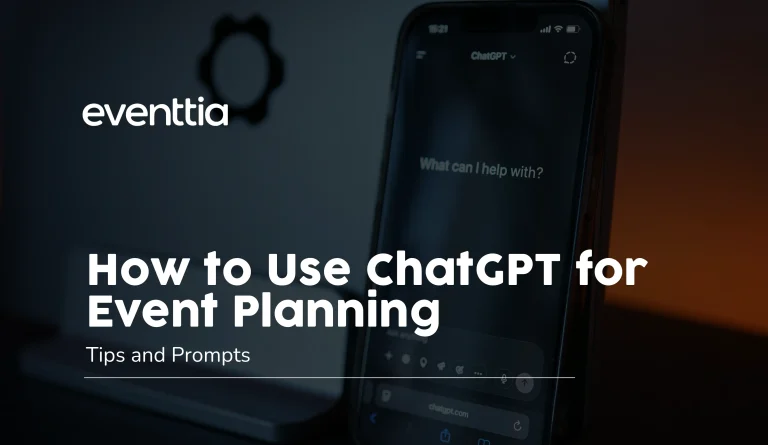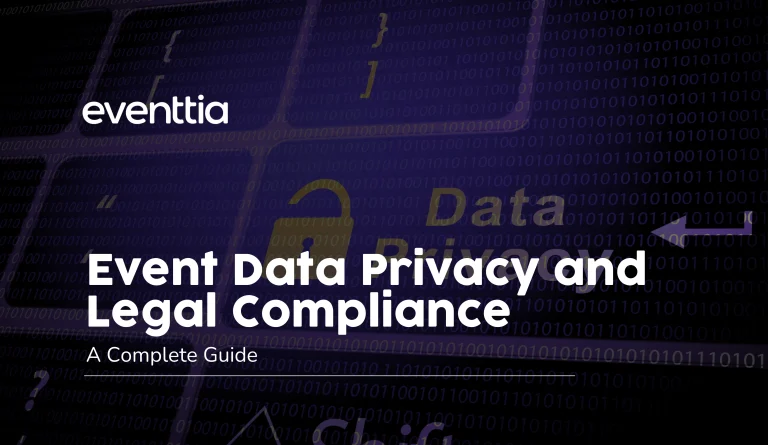Reducing Event No-Shows: Quick Summary
How can event organizers minimize no-shows and boost attendance?
No-shows are costly → They weaken event energy, networking, and ROI. Free in-person events see 40–60% no-shows, paid events closer to 10–20%, and webinars average 35–50%.
Commitment tactics work → Even small ticket prices or refundable deposits significantly lower no-show rates compared to free events.
Strong registration flows reduce drop-off → Confirm attendance in advance, use multi-touch reminders (7 days, 72 hours, 24 hours, 2 hours), and personalize communication to boost turnout.
Psychology helps → Scarcity, FOMO, and visible pre-event value (like session selection or matchmaking) increase attendee commitment.
Friction kills attendance → Simplify logistics with clear maps, QR check-in, accessibility options, and fast lanes to prevent last-minute drop-offs.
Virtual events need special care → Highlight live-only perks, send timezone-specific reminders, and provide one-click joining to reduce attrition.
Tech + strategy = results → Eventtia streamlines confirmations, waitlists, reminders, and analytics to make reducing no-shows part of your standard event playbook.
Even the best-planned event can stumble if registered guests don’t actually show up. Picture a keynote speaker stepping on stage to see rows of empty chairs. The catering team carries out trays of untouched food. Sponsors whisper about the disappointing turnout. Attendees who did show up sense the energy dip in the room. No-shows are not just a budget problem. They affect the mood, the networking, and the impression your event leaves behind.
One of the most effective ways to prevent no-shows is to start with a solid registration strategy. Use our free Event Registration Checklist to map out your registration flow, confirm key touchpoints, and reduce drop-off before event day.
The good news: you can materially reduce no-shows with a smart, end-to-end plan that combines psychology (commitment and value), operations (logistics and backup plans), and technology (automation and data).
In this guide, you’ll get fresh benchmarks on no-show rates, 20 proven strategies to minimize them, and practical notes on virtual events and webinars.
What Is the Average No-Show Rate for Events?
The average no-show rate for events varies from 10% to 60%, depending on your event’s format and whether you charge admission:
- Free in-person events: Expect the highest no-show rates. Free event no-shows are generally between 40% and 60%.
- Paid in-person events: Charging creates commitment. A 2024–25 benchmark roundup cites ~10% no-show as the benchmark for paid events, with some organizers still seeing 20–30% depending on audience and price.
- Virtual events & webinars: Industry figures often cite ~35% no-show, though this varies by audience and format. Recent webinar studies put live attendance at ~35–50% of registrants, with some of the remainder shifting to on-demand.
Ultimately, if your event is free and in-person, plan for higher no-shows unless you price, confirm, and nudge registrants effectively. Paid events and member-only gatherings typically see the lowest no-show rates, as those registrants are often more invested in the event.
How to Reduce No-Shows at Events: 20 Proven Strategies
If you’re concerned that your no-show rate is going to be high, or if you’ve had issues with high no-shows in the past, here are some strategies you can implement for your next event to keep your attendance as high as possible.
1. Put a Price (or Refundable Deposit) on Your Event
People value what they pay for. A small ticket price or a fully refundable deposit (refunded on check-in) helps commit people to attending your event. Benchmarks show paid events often land near ~10% no-show, far lower than free events. Eventtia supports tiered ticketing, promo codes, and refund workflows so you can test small price points or no-show-refundable deposits without friction.
2. Highlight Your Event’s Value
Send registered guests something to “lose” if they skip, e.g., session selection with limited seats, pre-reads, matchmaking preferences, or 1:1 meeting slots. The more personalized value they see ahead of time, the less likely they’ll forfeit it. Eventtia’s agenda builder and attendee portal let your attendees see what your event offers, and increases their perceived value of your event.
3. Use Scarcity
When people know capacity is limited, their commitment rises. Use waitlists and auto-promotion from waitlist when cancellations occur. Eventtia can automatically create a waitlist, then notify guests when a space frees up. Plus, because Eventtia integrates with your CRM, you can then tag that person and add them to an event-specific newsletter, which ties back into showing the value of your event.
4. Ask Registrants to Confirm Their Attendance
Add a “Please confirm your attendance” step 5–10 days out from your event. Registrants only need to click once to confirm, and those who don’t can be moved to a waitlist. Eventtia supports automated email sequences and confirmation forms so you can segment messaging (confirmed vs. unconfirmed) and target registrants who haven’t yet confirmed.
5. Use Multi-Touch Reminders (Email + Calendar + Day-Of)
No single reminder is enough. Build a cadence to remind your guest about your event and give the information they need, when they need it. Depending on your event, your cadence might look like this:
- Instant confirmation with calendar .ics attachment
- T-7 days: Highlight the value of your event, basic time information, and logistics
- T-72 hours: Give registrants last-minute details, a QR badge, and transport tips
- T-24 hours: Send a last-minute reminder with anything they need to know about checking in
- T-2 hours: Offer a quick “See you soon” with detailed directions or a link to Google Maps
6. Simplify Your Event’s Logistics
For in-person events, some no-shows are a result of friction.
Imagine an attendee circling the block three times without finding parking. Another arrives at the building but cannot locate the right entrance. Others see long check-in lines on social media and decide it is not worth the wait.
These are small barriers that can quickly turn into lost attendees.
Simplify your event’s logistics by:
- Providing map pins for parking, public transit, rideshare drop, and entrance door
- Offering different arrival windows so lines aren’t too long at any one time
- Giving your attendees badge, QR, and fast-lane instructions
- Providing clear instructions for those who need accessible entrances
7. Build FOMO Around Your Event
Nobody likes to feel left out. Think of the buzz when friends share photos from an amazing concert or a colleague posts about a career-changing workshop you missed. That same psychology applies to events. If registrants see highlights, testimonials, or behind-the-scenes glimpses in advance, they will picture themselves missing something important if they do not attend.
You can use your social channels to promote your event and show registrants what they’ll miss if they don’t show up. If you’ve held similar events in the past, share clips or highlights to encourage more registrants to attend.
8. Recruit Speakers, Sponsors, and Hosts as Co-Promoters
If your event has speakers, sponsors, or hosts, make sure you’re making the most of them. Encourage these individuals to share information about your upcoming event with their audience or network, and tag them in your event-related posts and content. Not only will this help you reach more potential attendees, but it will also reinforce your event’s value once again.
9. Make Ticket Transfers or Cancellations Easy
Life happens. A registrant might get sick the night before, a flight may be canceled, or a work crisis could pull them away. Instead of silently losing that attendee, make it simple for them to transfer the ticket to a colleague or cancel with one click.
What may seem counterintuitive actually strengthens attendance overall: each cancellation or transfer frees up a spot you can offer to someone else, reducing no-shows and keeping your event room full.
10. Encourage Attendees to Arrive Early
Offer early-bird perks at check-in (e.g., a welcome coffee meet-and-greet, a swag pick-up window, or limited mentor office hours). Make it clear that these perks are only for guests who have confirmed their attendance and arrive early. This will help you get more attendees through the door early, which helps your event get off to the best possible start.
11. Use Overbooking (Carefully)
If you’ve held similar events in the past and you’re confident you know what your no-show rate tends to be, you can actually try overbooking. This is where you sell or offer more tickets than you can technically offer spaces for, under the assumption that a certain number of attendees won’t show up.
You need to do it carefully, of course, or you’ll have too many attendees and not enough resources for them. As an example, if your historical no-show rate is 20%, you might over-issue registrations by ~10–15%.
12. Optimize Your Event Timing With Data (Day, Time, and Seasonality)
Many datasets find mid-week performance best, and some recent benchmarks highlight January as a high-attendance month for webinars. Track your audience’s open/click behavior and arrival times, then schedule accordingly. Eventtia’s robust analytics dashboards can help you understand email performance, registration velocity, and show-up patterns you can reuse.
13. Use an Event App to Engage Your Registrants
An app is a great way to get your registrants more invested in your event. Encourage them to download your event app once they sign up, or even incentivize app usage by offering special deals, content, or other benefits.
Once the app is installed, you can use push notifications to send reminders and build buzz around your event. Eventtia offers a customizable event app for in-person events, allowing registrants to access important information, engage with each other, book meetings, and more.
14. Highlight Your Venue
If your event is being held at an enticing venue, like a luxury hotel or a beach-front resort, make sure your registrants know it. People are more likely to attend if they have the opportunity to explore a new location and spend time in a setting they wouldn’t otherwise be able to. Share location and venue sneak peeks across your social channels, via email, and through your event app.
15. Offer Post-Event Rewards
Think about the feeling of walking away with something tangible after an event, a certificate that boosts a résumé, priority access to next year’s conference, or even a digital badge that can be shared on LinkedIn. These rewards make attendance feel like a personal investment rather than just a day on the calendar.
You can use Eventtia’s attendance reports to automate certificate emails and next-event VIP lists.
16. Make Your Event Accessible and Inclusive
Accessibility isn’t optional, it’s fundamental. If registrants feel your event won’t meet their needs, they may simply not show up. Ensure your venue offers wheelchair access, captioning, or interpreters, and design sensory-friendly spaces for neurodivergent guests. Asking accessibility questions during registration signals you care and reduces day-of surprises that lead to no-shows.
17. Engage Your Community Year-Round
Attendance doesn’t start a week before your event, it’s influenced by how you nurture relationships throughout the year. Keep your audience connected with newsletters, online communities, and highlight reels from past events. If attendees already feel part of your community, they’re far more likely to commit on event day.
18. Add the Human Touch
Remind attendees that their presence matters beyond logistics. A speaker who prepared for weeks wants to see a full room. Sponsors want their booths buzzing with conversations.
Other attendees expect vibrant networking. When seats are empty, everyone feels the difference. Personalized messages like “Your seat is waiting for you” or “This workshop was created with you in mind” remind registrants that their attendance makes the event stronger and more meaningful.
19. Connect Attendance to Sustainability
No-shows don’t just waste budget, they waste resources. Uneaten catering leads to food waste, empty programs mean wasted paper, and unused travel arrangements add to carbon emissions. Communicating this impact encourages registrants to confirm, transfer, or cancel responsibly, aligning your event with their values.
20. Learn from Real-World Examples
The best way to refine your approach is to study what’s worked for others. Industry benchmarks and peer examples provide valuable insight into which tactics actually move the needle. For instance, across several Eventtia-managed conferences in 2024, organizers who added a refundable deposit saw attendance improve by 15–20%. By collecting and applying lessons from other events, you can avoid guesswork and focus on strategies proven to deliver results.
What About Virtual or Hybrid Events?
Virtual attendance dynamics are different: people can register on impulse and skip just as easily, then catch the recording later. Benchmarks commonly show ~35–50% live attendance vs. registrations, with on-demand views making up a percentage the rest. Here are some tactics to reduce no-show for your virtual events.
Provide Frictionless Joining
Include a unique, one-click join link with calendar (.ics) in every email reminder you send to attendees. Make sure you provide clarity for attendees in different timezones, and include a 15-minute reminder on your calendar invites.
Promote Live Attendance vs On Demand
If you’d prefer people to attend your webinar live, promote the live-only perks (like live Q&A, giveaways, 1:1 time with experts and guest speakers), then promise the recording to all registrants afterward. This reduces hard no-shows and boosts your total reach.
Test Different Times, Lengths, and Days
If you’re hosting webinars or other virtual events on a regular basis, you’ll soon get an idea of your average registration-to-attendance rate. Once you have a baseline number to work from, you can test hosting webinars at different times of day, on different days, and for different durations.
Once you find a winning strategy, use that format for your virtual events moving forward to maximize attendance. Eventtia analytics help monitor registration velocity, attendance, and engagement across events so you can easily gather the data you need to perform these experiments.
Key Takeaways: Reduce Your Average No-Show Rate For Events With Eventtia
No-shows will always exist, but they do not have to define your event. Instead of empty rows and wasted resources, picture a room alive with energy, speakers motivated by a full audience, sponsors engaged with steady booth traffic, and attendees leaving with meaningful connections. The strategies above will help you move from the frustration of half-empty seats to the satisfaction of an event that feels vibrant from start to finish.
Reducing no-shows requires a mix of psychology, logistics, and technology. Refundable deposits, FOMO-driven marketing, clear communication, and year-round community engagement all make a measurable difference.
Eventtia makes it easier to put these strategies into action. From registration and ticketing to automated reminders, QR check-in, waitlist management, and analytics, our platform streamlines the process so you can focus on creating experiences your guests will remember.
If you would like to see how Eventtia can help you cut no-shows and boost attendance, schedule a demo and explore the difference it can make for your next events.
Discover how Eventtia helps world-leading brands digitize and scale their events
Learn moreShare





